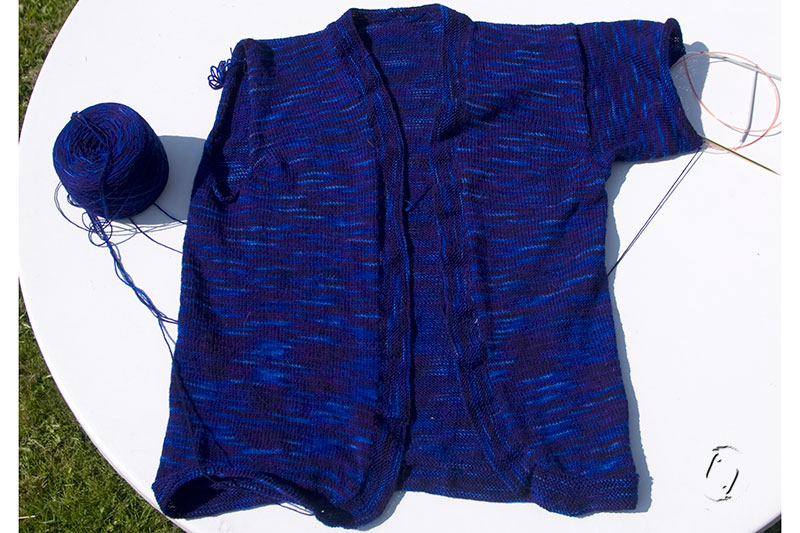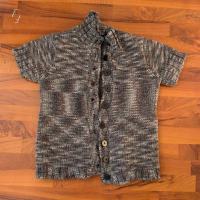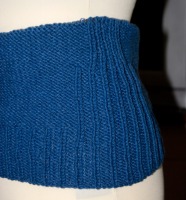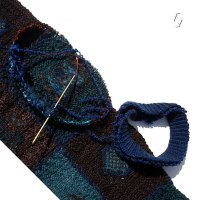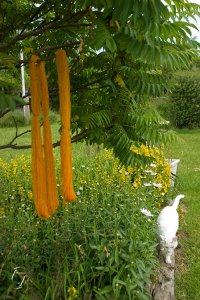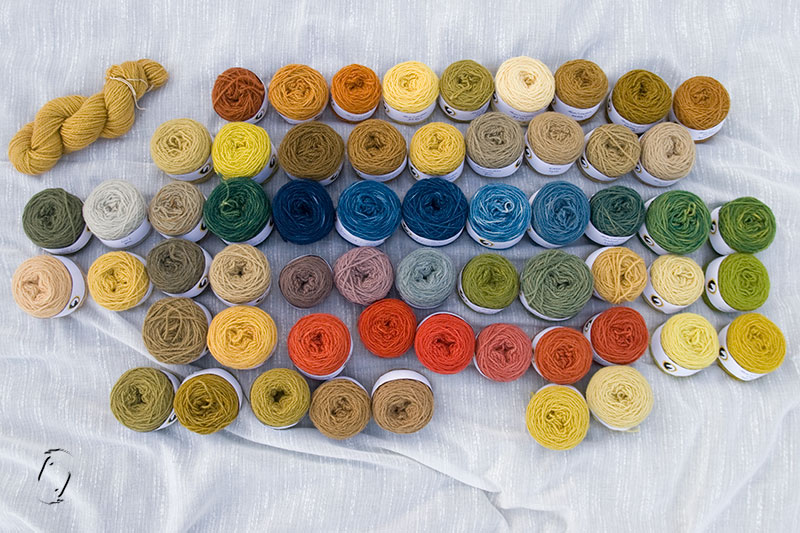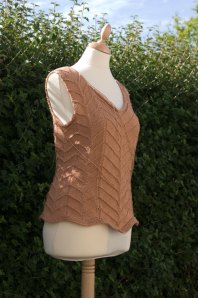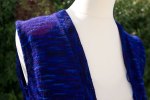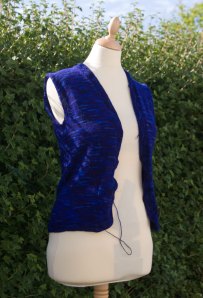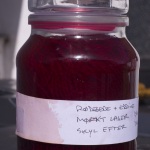
Didn’t manage to get done yet, even though I have several knitting projects just waiting, tempting…
So what do you do about sleeve syndrome?! As soon as I get there, I just lose all my steam. Knit summer tops you say? But I’m such an icicle, I need my heavy sweaters… I could do the sleeves first, but I tend to have length issues when I do. I need to set up some sort of reward system perhaps? I feel really silly working on one project, while my mind is all buzzing about another one that I’d rather be doing. Not very zen. I wanna be zen! So what do you do when one sleeve turns out too thin, the other too wide (not on the same garment thank goodness) and the body has stretched in width (on the garment that has too thin sleeve – but will the sleeve grow too?). You get REALLY bored!
This is just the very short immediate list. Oh boy, you should see the other one!
Sleeves on orange sweaterSleeves on blue featherweight cardiganBlue reverse sweaterFeltedbag- New soft collar for ugly scratchy sweater
I felted the sweater, which I didn’t remember had no sleeves. I’d meant to use those sleeves for the shoulder strap. It also shrank A LOT. Well, that’s what felting does, stupid… So, now I have to knit some kind of strap, then felt THAT, before I have my bag. Which incidentally won’t be big enough for its intended use I think… Anyway, not the quick and dirty project I had in mind! For some reason, second hand stores here don’t have any wool sweaters, it’s all bleeping acrylics. I guess it’s a good thing though, I don’t need any storage space for felted items-to-be-turned-into-cool-stuff. I may just cut off the buttons and save those, you know. I know a cat or 3 who would love a new sweater.
I need a magic wand to finish these UFOs. And not one of those with a knob and a number on the end.
And now to go frog the too wide sleeve. In laceweight on 3 mm needles…. Wax on, wax off….. Yes, I did read that book up top. All looks so simple on paper, yes? Actually, maybe I’ll just keep knitting and accept what I get.
â Leave a Comment
Projektbunke-projekt
Så blev det lige tid til lidt stilletid, læs og strik, få has på nogen af de halvfærdige ting (så jeg kan starte 10 nye, ikke?). Jeg prøver at øve mig i at gøre få ting og gøre dem færdige frem for at rende mellem 25 forskellige projekter og få stress som jeg plejer. Jeg kan tilsyneladende ikke tænke langsomt, men måske jeg kan lære at opføre mig langsomt.
Det er ikke helt lykkedes mig at blive færdig endnu, selvom jeg har adskillige strikkeopgaver som ligger og frister! Jeg ved ikke helt hvad der sker, men så snart jeg når til ærmerne, længes jeg bare efter nye projekter. Hvilket er skørt, for ærmer tager jo ingen tid i forhold til kroppen, få dem dog overstået! Og hvad sker der så? Jo, selvfølgelig bliver det ene ærme for smalt og det andet for bredt (dog ikke på samme trøje), i min iver for at blive færdig. Og så tager ærmer pludselig meget lang tid, især med mønsterstrik som man er blevet rigtig, rigtig træt af. Nogen som har en tryllestav til låns? (ikke en af dem med numre på) Ja, og selvfølgelig er kroppen på det smalle ærme vokset i bredde helt af sig selv, men kan man forvente at ærmet også gør det?!
Ãrmer til orange sweater
Ãrmer til blÃ¥ cardigan
Blå omvendt sweaterFiltettaske af sweater- Strikke ny blød halskant til kradsende, grim, men varm trøje
Dette er den meget korte liste – I skulle bare se den lange… Mht. at filte en taske, ja, jeg havde overset at der ingen ærmer var pÃ¥ trøjen, de skulle have været brugt til skulderstroppen. SÃ¥ nu skal jeg pludselig til at lave en skulderstrop af noget andet, det tager lige mere tid end beregnet. Eller ogsÃ¥ klipper jeg bare knapperne af og gemmer til noget andet og giver trøjen til kattene.
NÃ¥, det blev sÃ¥ til en rapport om, hvordan man IKKE bliver færdig med sine UFOer… I gang med at trevle ærme – i lacegarn pÃ¥ pind 3. Zen, tænk zen…. wax on, wax off.
Hm. Måske få projekter slet ikke giver mindre stress end mange?
Vidste du, at man kan kommentere min blog uden at være wordpress medlem? Bare udfyld navn er nok. Det er så hyggeligt med dialog fremfor monolog!


